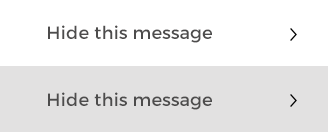
About
Summary
Kent County Council and Visit Kent carried out a cross-border Interreg IVa ‘Two Seas’ project known as Coastal Actions for Sustainable Tourism (CAST) with partners Westtoer in West Flanders and the Comite Departemental de Tourism in Pas de Calais.
The overarching objectives of the review were to:
- Identify the signs used along the coastline, their ownership and make recommendations for improvement with particular emphasis on a partnership approach between owners.
- Contribute to growth by clearly identifying business development opportunities
This project involved a review and evaluation of the:
- Signs on the Kent coastal strip to identify ownership, areas of clutter and make recommendations for improvement to enhance the visitor experience.
- Coastal product in Kent, which identified business opportunities along the coastline.
The project researched the basic infrastructure of the coastal area and set out a vision for how the cross border coastal region could be managed more effectively to improve the visitor experience.
Our Approach
A comprehensive audit was undertaken of all the relevant signage along the coastal strip of the Districts of Thanet and Dover. For the purpose of the study the coast was divided into Coastal Areas and Visitor Domains that corresponded to the structure of the Visitor Facilities audit also undertaken as part of the Kent Coastal Analysis.
The signs audited included traffic and pedestrian directional signage, information and interpretation boards and panels, and directive signage. Each sign was mapped and photographed. Data was collected on individual signs and fed into a database. The survey collected information on the location of each sign, its function, graphic clarity and ownership. The Excel database was supplied to the client team to enable each District to undertake further analysis as required.
The Product Development phase of the project involved a policy review, a detailed destination audit, a demand analysis and extensive stakeholder and community consultation. This was to be followed up in a second study which included best practice case studies, detailed business planning and the production of investment prospectus.
Outcome
The product development strand of the Kent Coastal Analysis Project detailed the audit of the coastal strip, the policy context assessment, and the initial market demand analysis which shaped our thinking on the development opportunities along the coast. Those ideas were presented as a long list of options that was whittled down to three recommended options that offered the most in terms of the likelihood of success, economic benefit, and, through alternative asset management arrangements for local authorities, public sector savings.
The second phase of the project would take the agreed development options and look in more detail at the costs, market demand, potential returns on investment, planning issues and delivery paths. The next more in-depth study was supported by a Best Practice case study relevant to each of the agreed options.
Directions
Projects Nearby
A Vision for Kent's Coast was developed, within a wider strategy for Kent's coast,…
An online toolkit for businesses to understand what simple steps they could take to…
Thanet's 17 beaches are its greatest tourist asset. This strategic action plan produced a…
Dover District Council needed a tourism signage audit for the town. Each sign was…
Reculver Country Park needed a Masterplan to rejuvenate the once thriving destination.…
The Destination Management Plan for Shepway is based on extensive stakeholder…
Visitor survey to determine the future potential of sustainable tourism in the Downs and…
There are a large number of World War I and II sites in Northern France, some of which…
Osea Island is a privately-owned island in the River Blackwater in Essex. Acorn was…
This study assisted the Camber Visitor Management Initiative to develop a business plan…
Review of the tourism information centre network in Kent with the aim of making…
Study to investigate the feasibility of developing the Strand Car Park in Rye, which has…
The National Trust required interpretation and development options for nine properties in…
Visit Kent and Visit Essex needed to determine the unique identity and core values of…
A review of tourism in the High Weald Area of Outstanding Natural Beauty was undertaken…
A feasibility study for a modern interpretive education centre based in Hastings Country…



.png)





